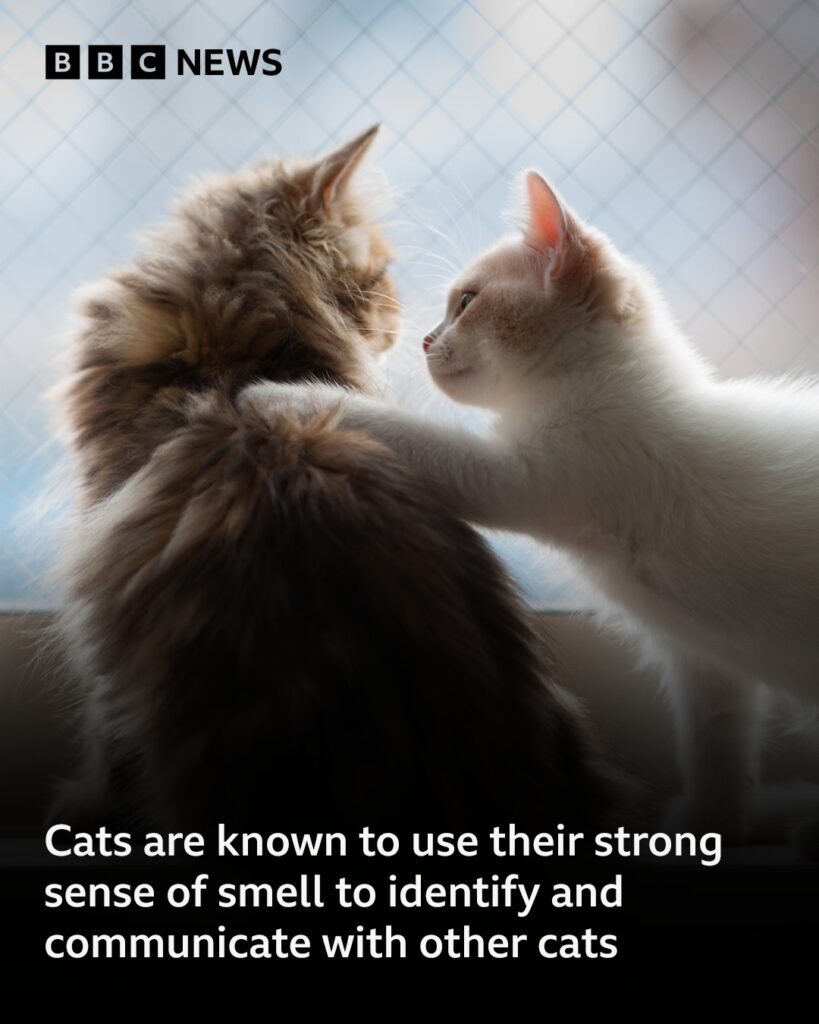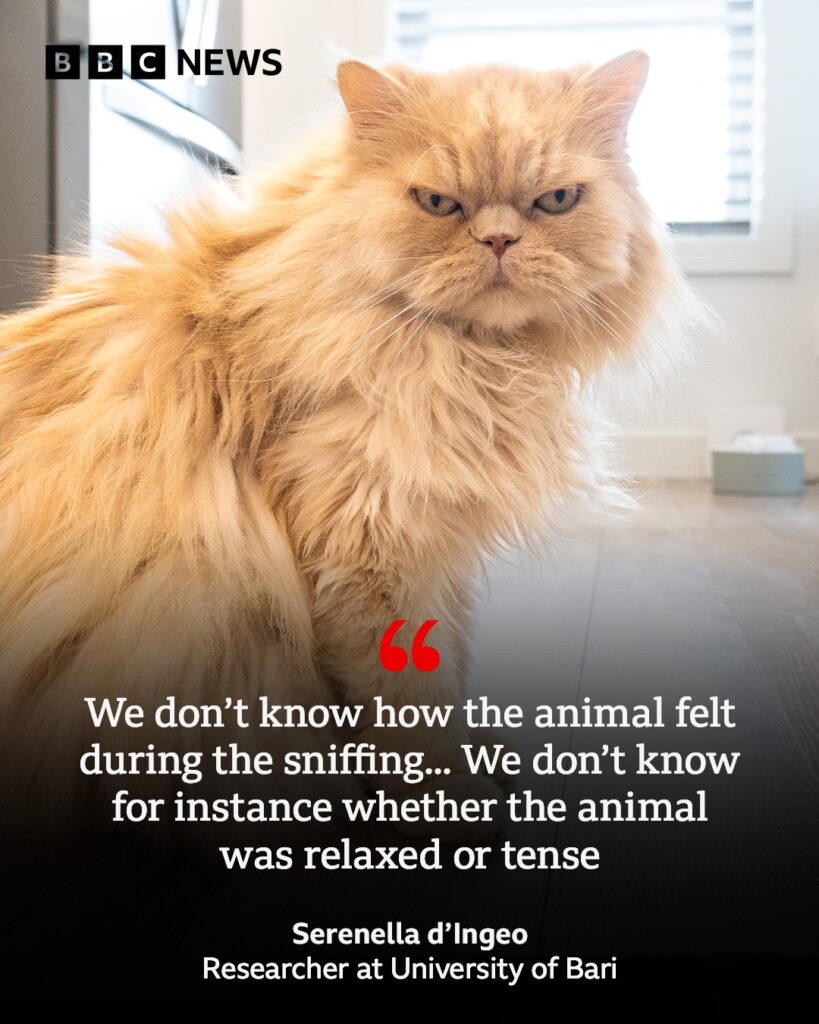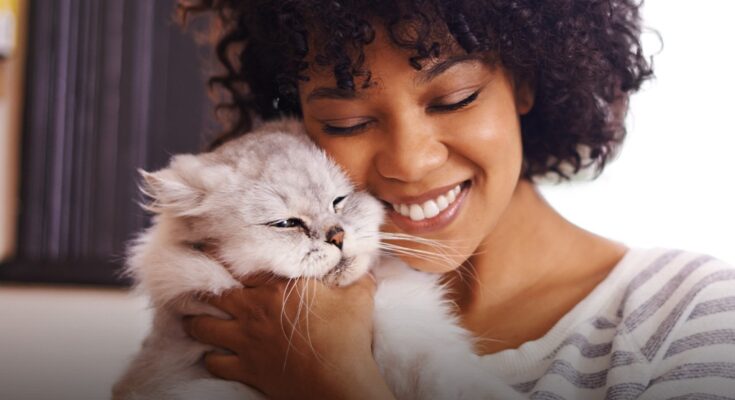
A study by the Tokyo University of Agriculture has found that domestic cats can tell the difference between the smell of their owner and that of a stranger.
Researchers presented 30 cats with plastic tubes containing either a swab containing the odour of their owner, a swab containing the odour of a person of the same sex as their owner who they had never met, or a clean swab.
Cats spent significantly more time sniffing the odours of unknown people compared to those of their owner or the empty tube.
Previous studies of human recognition by cats have shown they are able to distinguish between voices, interpret someone’s gaze to find food, and even change their behaviour according to a person’s emotional state.
Tap the link in @BBCNews’s bio to find out what else the study discovered.
(Getty Images)
For cat owners, one of the most delightful and sometimes mystifying experiences is the way their feline friends interact with them. Unlike dogs, who often display obvious signs of recognition and affection, cats can seem aloof or indifferent. This has led many to wonder: does your cat actually recognise you? A recent scientific study offers new insights into this question and sheds light on why cats behave the way they do around their human companions.
The Mystery of Feline Recognition
Cats are famously independent animals. They don’t typically respond to their owners’ calls with the enthusiasm that dogs do, and many owners note their pets often ignore them, even after being called. This has sparked a common misconception that cats do not recognise their owners or that they simply don’t care.
However, behavioural scientists have been curious about this for years. Recognition in animals is a complex process. It can involve recognising a person’s voice, scent, appearance, or even their routine habits. Cats have keen senses and social intelligence, but their subtle ways of showing recognition can easily be misunderstood by humans.
The Study That Changed Perspectives

A landmark study published in the journal Scientific Reports in recent years has shed light on how cats recognise their owners. Researchers conducted experiments involving the cats’ responses to different auditory stimuli: their owner’s voice, a stranger’s voice, and various environmental noises.
Using a controlled setup, they played recordings of these different sounds to a group of domestic cats and observed their behavioural responses. The key was to measure not just if the cats reacted, but how — did they move their ears, turn their heads, or approach the source of the sound?
The results were fascinating. While cats did respond more often to their owner’s voice than to strangers’, they rarely approached or showed overt excitement like a dog might. Instead, their responses were more subtle: slight ear flicks, subtle head turns, or brief eye contact.
Why the Subtle Responses?
The study suggested that cats do indeed recognise their owners but express it in ways that humans might not immediately interpret as recognition or affection. This subtlety may be tied to cats’ evolutionary background and their solitary hunting lifestyle.
Unlike dogs, which evolved from social pack animals that rely on group cooperation, cats are solitary predators. Their survival depended more on stealth and caution than on social overtures. This evolutionary trait influences how cats communicate and express attachment.
For cats, loud vocalizations or overt attention-seeking behaviour might attract unwanted predators or rivals in the wild. So, even in domestic settings, their nature leans toward more reserved signals.
The Role of Scent and Routine

Apart from auditory recognition, cats rely heavily on scent and familiarity with their owner’s routines. Cats have a powerful olfactory system — far more sensitive than humans’ — which helps them identify individuals by smell.
When a cat rubs its face or body against you, it is marking you with its scent glands. This behaviour is a sign of comfort and recognition. Similarly, cats often associate certain human behaviours, like feeding or petting, with positive outcomes, reinforcing their recognition of individual people.
What Does This Mean for Cat Owners?
Understanding that cats recognise us in subtle ways changes the way we might interpret their behaviour. When a cat follows you from room to room, blinks slowly in your direction, or greets you at the door with a quiet meow or nuzzle, these are likely signs of recognition and affection.
It also means that patience and observation are key to building strong bonds with your cat. Instead of expecting dog-like enthusiasm, appreciating these quiet gestures helps deepen the connection.
The Science of Cat Communication
Scientists continue to explore how cats communicate with humans and other cats. Vocalisations, body language, and facial expressions all play roles. Interestingly, cats have developed specific “meows” and purrs that appear to be tailored for communicating with humans — sounds they rarely use with other cats.
Research has shown that cats’ purring can have a calming effect on humans, and some cats even change the pitch of their meow to elicit food or attention.
Why Do Some Cats Appear More Aloof?

Not all cats exhibit the same degree of attachment or recognition behaviours. Several factors can influence this:
- Early socialization: Cats that were handled gently and frequently by humans as kittens tend to be more trusting and responsive to people.
- Personality: Just like people, cats have unique personalities. Some are naturally more sociable or affectionate, while others prefer solitude.
- Environment: A cat’s living conditions and relationship with its owner can affect its behaviour. Stress, past trauma, or illness can make cats more withdrawn.
Encouraging Recognition and Bonding
If you want to encourage your cat to recognise and engage with you more, there are several things you can do:
- Speak calmly and consistently: Cats respond well to a gentle, familiar voice.
- Spend quality time: Play, petting, and quiet companionship strengthen your bond.
- Respect their space: Allow your cat to approach you on their own terms.
- Use scent: Wearing the same clothes or sleeping in the same bed helps your cat associate your scent with comfort.
Final Thoughts
So, does your cat recognise you? The answer is a resounding yes — but it may not show it the way you expect. Cats have their own unique language of recognition, built on subtle cues and deep familiarity.
This new understanding invites us to appreciate the quiet, sometimes mysterious ways our feline friends express their bond with us. Rather than questioning their affection, we can learn to listen and observe more closely, enjoying the gentle ways cats say, “I know you, and I trust you.”



